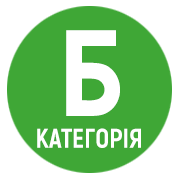TEXT AND DISCOURSE IN MODERN LINGUISTICS: APPROACHES AND PROBLEMS
DOI:
https://doi.org/10.32689/maup.philol.2023.5.4Keywords:
text, discourse, pragmatic, speech act, communicative intentionsAbstract
The article is devoted to the consideration of the concepts of text and discourse. The terms "text" and "discourse" correspond to two areas of study of speech interaction – text linguistics and discourse analysis. In theoretical sources on this issue, both directions are considered identical, opposite, and unrelated. The purpose of the article is to analyze the difference between text and discourse. To realize the goal, the following tasks are set: 1) the text is considered as the result of a person's practical activity, which presents the professional sphere of life, where the collective consciousness of society is realized; 2) under such conditions, the study of different levels of text stratification is carried out taking into account the author's intention, communicative strategies and tactics, pragmatic instructions, which are implemented by relevant linguo-pragmatic methods and appropriate language means. The scientific novelty is that the article carries out a functional-discursive and pragmatic analysis of speech units based on the material of oral and written discourse-text. The conclusions state that the text is a complex, organized structure, close to a speech work, characterized by integrity, coherence and completeness. The discursive context of the text, in contrast to the linguistic context inherent in the texts, is a combination of psychological, social, pragmatic characteristics and is an abstraction in relation to real situations. However, scientists believe that these concepts are organically connected and are in a cause-and-effect relationship, including within the concept of "discourse-text", where discourse is a process of speech thinking, and text is a result or product of this process. Today, the belonging of this or that text to the corpus of texts of a certain discursive variety, mediated by the sphere of communication, where one text is the main, but not the only, element in the communicative process. The intentions of the addressee during the sequential implementation of a whole chain of actions determine the creation of different types of speech. Discourse is used to denote various types of speech and speech works, which are combined with linguistic and non-linguistic factors. In general, the main difference between discourse and speech is within the social and the individual. There are certain differences in the definition of the concepts "discourse" and "speech", since speech has two meanings: the process of speaking / writing (speech activity) – the path from language messages (texts) begins with the analysis of the structure, the separation of elements from it to generate a new structure, and finally – the synthesis of a new structure from the newly created elements, and the result of speaking / writing (verbal texts that remain in the memory or in writing) – the path of a verbal message (text), the activation of elements of individual events and provisions to more complex propositions and thinking structures, namely from deep semantic and syntactic structures to the simplest sentences.
References
Бацевич Ф. С. Лінгвістична генологія: проблеми і перспективи (монографія). Львів: ПАІС, 2005.
Бєлова А. Д. Поняття "стиль", "жанр", "дискурс", "текст" у сучасній лінгвістиці. Вісник Київського національного університету імені Тараса Шевченка. Іноземна філологія, 32, 2002. 11–14.
Денисова С. П. Лінгвістика на зламі наукових парадигм : від Фердинанда де Соссюра до Ноама Хомського. Вісник Київського національного лінгвістичного університету. Серія: Філологія, 16 (1), 42–49.
Дорда С. В. Про деякі особливі характеристики юридичного дискурсу. Світогляд – Філософія – Релігія, 5, 2014. 146–154.
Колісник Ю. Текст і дискурс: проблеми дефініцій. Вісник Національного університету "Львівська політехніка". Серія "Проблеми української термінології", 675, 2010. 111–114.
Коломієць О. М. Семантико-синтаксична реконструкція газетних синоптичних текстів (на матеріалі англійської, німецької, польської та української мов) (Дис. канд. філол. наук). Національний педагогічний університет ім. М. П. Драгоманова, Київ, Україна, 2017.
Леміш Н. Є. Корпусна метарозмітка спеціальних текстів з лінгвоантропогенезу. Науковий часопис національного педагогічного університету імені М. П. Драгоманова. Серія 9: Сучасні тенденції розвитку мов, 15, 2017. 139–152.
Мацько Л. І., & Кравець, Л. В. Культура української фахової мови. Київ: Академія, 2007.
Павлюк Л. С. Текст і комунікація: основи дискурсного аналізу. Львів: ПАІС, 2009.
Панько І. І., Кочан, І. М., & Мацюк, Г. П. Українське термінознавство. Львів: Видавництво "Світ", 1994.
Пентилюк, М. Актуальні проблеми сучасної лінгводидактики. Київ: Ленвіт, 2011.
Brinker, К. Text– und Gesprächslinguistik: ein internationales Handbuch zeitgenössischer Forschung. Walter de Gruyter. Language Arts & Disciplines, 2000. 1805 p.






